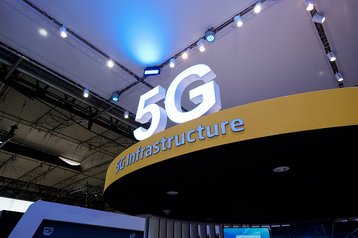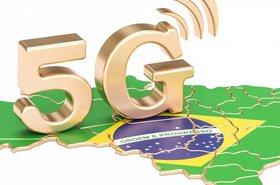In 1979, Nippon Telegraph and Telephone (NTT) launched the first mobile cellular network in Tokyo, Japan. An analog system, it is now referred to as a “first-generation” or 1G network. By 1983, NTT rolled out coverage throughout the whole of Japan, while other 1G networks were springing up in Europe and elsewhere.
Motorola began service in 1983 in the US - where Bell Labs had proposed such a network as early as 1947, but dismissed it as impractical. 1G had a lot of drawbacks including poor audio quality and limited coverage. There was no roaming support between networks, because there were no standards. However, it was revolutionary and paved the way for further development within the sector.
The next iteration, 2G was a big improvement, using digital radio signals. It appeared in 1991 in Finland, and was launched under a standard - GSM - which promised the possibility of international roaming. Providing SMS and MMS, the new technology was adopted widely. Despite slow speeds and relatively small bandwidth, 2G revolutionized businesses and customers on a scale never seen before.
3G evolved in the years leading up to 2000, with the aim of standardizing the network protocols used by vendors thus providing truly international roaming. NTT Docomo launched the first 3G network in 2001. 3G offered speeds about four times higher than the peak possible with 2G, and supported new protocols and solutions like VoIP, video conferencing and web access.
This opened the packet switching era in mobile phone communications. While functions like Internet access struggled at first, the launch of the iPhone in 2007 stretched 3G’s capabilities to the limit. It was clear that 4G would be needed - and international standards bodies including the ITU have been working on it since 2002.
In 2009, the 4G Long Term Evolution (4G LTE) standard got its first run in Sweden and Norway, and was rolled out over the next few years. 4G’s speed has enabled multiplayer gaming on the go, high quality video streaming and much more. However, the protocol is plagued by network patchiness in a lot of regions around the globe with some suffering extremely low 4G penetration.
This feature appeared in the March issue of DCD Magazine. Subscribe for free today.
Enter 5G
This all paved the way for 5G, which was being developed from the moment 4G was delivered and is now already deployed in certain areas. It promises massive improvements such as allowing up to a million devices per square kilometer - which could revolutionize a lot of sectors.
The latest estimates from IHS Markit see 5G having an economic impact of at least $12 trillion as the focus shifts from connecting people to information towards connecting everything to everyone. Plus it promises an energy efficiency revolution in the field of mobile communication networks.
The Internet of Things era is now in full swing, with more devices connected to the Internet than there are people on Earth. All these devices send and receive data on an almost constant basis. While home IoT applications benefit from a local wireless network, business and industrial IoT will require untethered connectivity over long distances as well as enough bandwidth to accommodate all these applications at the same time.
Currently there are so many devices connecting to both 3G and 4G networks that these networks are close to breaking point, and cannot add the growing number of fresh devices that require perpetual connectivity. This is where 5G comes in. It is faster, smarter and more efficient than its predecessors with a much higher bandwidth.
Antennas, spectrum, and base stations
Communications networks are increasingly finding that space, power consumption, and emissions are major economical and operational issues. Given the vast increase in connected devices it is clear that energy efficiency will be a top concern for operators wishing to reduce overheads from both capital and operational expenditure.
So how does 5G fare in terms of power consumption and efficiency compared to its predecessors?
5G’s design requirements specify a 90 percent reduction in power consumption compared to current 4G networks - a figure which is based on the whole ecosystem, from the base stations all the way to the energy used by the client device. This massive reduction happens through a combination of updated design practices, hardware optimizations, newer protocols, and smart software management of the underlying infrastructure.
Currently mobile networks use, on average, anywhere between 15 to 20 percent of their overall power consumption in actual data traffic, with the rest being wasted mostly by keeping the components in a ready-to-operate state.
5G base stations will be able to go to sleep when network activity pauses. This is immensely important as base stations account for around 80 percent of the power used by a mobile network.
In current networks, the majority of base stations may be idle at any moment. Despite the increased number of devices and higher data rates, 5G may have more opportunities to power down base stations. Since 5G has a higher data transfer rate, data transits the network more quickly, increasing the time when the base station is idle. 5G data packets are more compressed, further reducing traffic volume.
The new network also adds a multipath transport control protocol (MPTCP) which reduces the need for packet replication and retransmission and increases reliability as more network paths are created. This is possible because 5G uses cheap and efficient MIMO (multiple input multiple output) antennas. A MIMO system of antennae can handle more clients and bigger volumes of network activity, and increase reliability by providing more routes for the data to take. Should one route fail another one can take its place.
MIMO antennas communicate with multiple clients using focused beams of radio waves (“beamforming”). This increases the channel efficiency along with data transfer rates and reduces the possibility of interference. It also focuses radio energy directly towards the connected device, and can identify the exact amount of power and energy required to further reduce energy consumption for both the base station and the device itself.
Furthermore, 5G makes use of smaller network cells, covering a given area with a larger number of smaller antennas. In mobile networks, a cell refers to the base station, its antennas and the physical area they serve.
5G’s small cells are designed to be deployed inside large buildings or outside in highly populated areas. Power consumption increases with the distance between the base station and the client device (the antenna has to “shout”), so these smaller network cells should be deployed to keep the communication distance as small as possible.
Finally, through a combination of new scheduling algorithms the spectral efficiency of 5G New Radio is massively improved over current networks.
In 4G networks, the signal scheduling included a large number of control and verification codes at regular intervals which could consume up to 20 percent of the network’s energy overhead during higher frequency transmissions.
In 5G streams, the control and verifications codes are greatly reduced. This is because the use of smaller mobile network cells cuts the communication distance, reducing the chance of interference or failure.
The scalability and flexibility of 5G networks are increased with software defined networking (SDN) and its related virtualization technologies. SDN works by decoupling the control layer of the wider network from its data plane and merged into a centralized control plane, which has access and overview over the whole network. This means that the hardware resources can be dynamically assigned by software to optimize traffic flow.
What does 5G actually deliver?
The 5G design specifies an almost Utopian technology which promises an energy efficiency revolution across the whole mobile communication ecosystem, but these promises should be taken with a pinch of salt when analyzing how the technology will perform once deployed.
The rollout of 5G to the public will be slow, mostly because of the relatively high initial investment required. So a full 5G coverage to the level of current 4G deployment is within sight but will take a few years. Full coverage is well beyond that.
For a long time, “legacy” mobile networks like 3G and 4G will account for the majority of a base station’s total energy consumption. The latest figures from Cisco’s Annual Internet Report 2018 - 2023 further emphasize this with “the top three 5G countries in terms of percent of devices and connections share on 5G will be China (20.7 percent), Japan (20.6 percent), and United Kingdom (19.5 percent), by 2023.”
Some analysts have argued that there may in fact be no energy savings when the technology is rolled out - depending on one’s definition of energy efficiency across 5G.
For example, the computational power required to process 5G signals is around four times that of 4G. On comparable hardware, one would expect 5G’s data processing component to have four times the energy consumption. However, this is only true if 5G is rolled out on the same infrastructure that 4G currently runs on without adopting the increased efficiency delivered by hardware manufacturers.
Mobile operators have been given significant spectrum for 5G networks, partly due to the imminent saturation of previous networks and the rise of industrial and commercial IoT. However efficient 5G is by design, it will add up to a further increase in energy used by the total mobile communication infrastructure. This will be the case until (and if) previous network generations are phased out.
This can have a domino effect on the wider digital infrastructure. The growth of 5G networks comes hand in hand with the rise and expansion of Edge data centers, so it seems reasonable to include the energy use of these facilities when discussing 5G’s efficiency.
Putting critical resources closer to the network edge can reduce latency, so 5G plus Edge facilities may deliver individual client interactions more effectively. However, if we factor in the vast increase in data storage, and processing needs of these applications over the coming decade, it seems that 5G will in fact simply enable an even more power-hungry digital infrastructure industry than today’s.
This could be potentially offset by a close collaboration between all the interconnecting industries, ensuring a powerful and reliable smart grid backed up by renewables and proper energy storage technologies.
Searching for standards
Standards are slow to emerge, as a consensus is needed between various parts of the communications and energy ecosystem. The number of bits transmitted per Joule of energy expended is now one of the top metrics used to analyse the efficiency of a network.
Currently, a cellular site will deliver an energy efficiency of around 20kbit/Joule, and some research papers in the field forecast that 5G could boost this more than two orders of magnitude to 10Mbit/Joule.
The future looks even more exciting as technologies are already starting to appear that introduce novel ways to harness 5G.
In “radio frequency harvesting,” the energy transmitted over radio waves can be captured and used on the client device or parts of the underlying infrastructure.
Since radio frequency signals carry both information and energy, it is theoretically possible to harvest some energy and receive some information from the same input.
This system is known as SWIPT - simultaneous wireless information and power transfer. The hardware required for this is still in development and there’s a rate-energy tradeoff between the amount of data and energy derived from a signal.
So SWIPT will never charge your smartphone wirelessly, but it is a novel approach which could offset the power consumption required for data transmission on the client device.
The rollout of 5G is likely to be closely linked to the rise of the modular and containerized “Edge” data center market, which in turn is driven by the need to make communication as efficient as it can be in energy and latency terms, by placing time-sensitive functionality at the network edge.
It’s clear that energy efficiency will be key to all future developments in the digital infrastructure industry.
In the next decade, we will see how 5G’s energy efficiency - and its impact on the world - plays out. Right now, the technology is in its infancy and there is not enough data to know what the impact its energy consumption will have in real life.
As every moving part of the industry becomes more knowledgeable and less risk averse, 5G could bring in an era of near instantaneous communication with a plethora of new industries and markets, making every effort to minimize their impact on the world, through collaboration and smart infrastructure deployment and management.
The roll out of this Edge-based technology will bring huge changes to data centers and other infastructure.
But for that to happen, companies have to ensure that efficiency is paramount, as they rush to compete for the sector.






